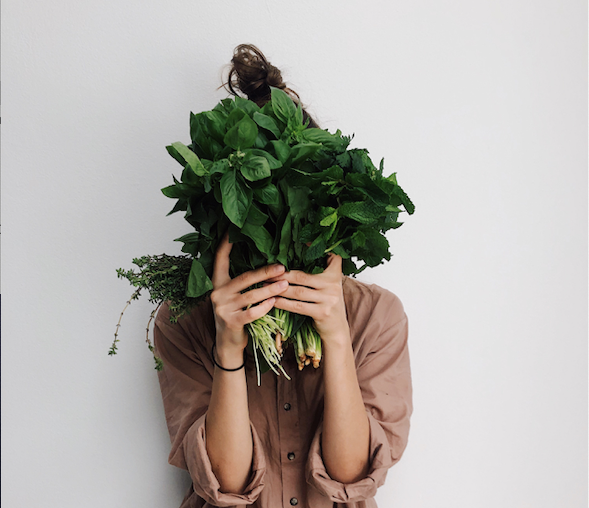Grow your own power

“The time has come to reclaim the stolen harvest and celebrate the growing and giving of food as the highest gift and most revolutionary act.” - Vandana Shiva
Have you felt it? From food to fuel, the cost of living is spiralling out of control – and the uncomfortable sensation of being squeezed from all sides is growing. But hope springs in the form of a more self-sufficient lifestyle and the chance to become less reliant on increasingly broken global systems…
Soaring costs and a world in chaos
First, we saw oil and gas prices rocket. The energy crisis drove inflation to a 30-year high at the end of 2021, with the industry warning fuel bills could increase by another 50% in 2022.
Then, the double-hit of soaring food costs and food shortages emerged. This February, the cost of food was 20% higher than the year before, with more and more people forced to use food banks and facing a choice between heating or eating.
With ‘Europe’s breadbasket’ Ukraine now under attack, the crisis has reached boiling point. Together, Ukraine and Russia produce nearly 30% of the world’s wheat.
Earlier this month, the National Farmers’ Union warned of a huge drop in UK-grown crops, including cucumbers, aubergines and peppers, as the crippling cost of gas makes them too expensive to grow. But it’s not only plants that are facing problems. The cost of raising a chicken has increased by 50% in a year for farmers, while the bird flu outbreak means that free range eggs will vanish from UK supermarkets.

And, with ‘Europe’s breadbasket’ Ukraine now under attack, the crisis has reached boiling point. Together, Ukraine and Russia produce nearly 30% of the world’s wheat, around 80% of its sunflower oil and 15% of its maize. Staggeringly, the two countries account for about 12% of global food calories. With the threat of a Russian grain ban looming, countries like China, Turkey and Argentina are already holding back their own exports.
Meanwhile, western sanctions on Russia – a major exporter of nitrogen, potassium, ammonia and other soil nutrients – have disrupted global fertiliser shipments. This has sent fertiliser prices sky-high, causing farmers worldwide to scale back its use and reduce the amount of land they’re planting. All these factors combined led the UN to predict a further 20% international food price rise this year.
The solution: Going back to our roots
“Given the current global situation we find ourselves in, there’s never been a better time to become more self-sufficient and reconnect with the soil,” says Conscious Spaces founder Tara Williams. “In the midst of so much uncertainty, it’s really empowering to grow your own food and beautiful plants to nourish your soul. Going back to the earth is such a grounding thing to do. It gives you a sense of strength and place, and helps you build an active relationship with nature. If you care for the soil, it will care for you in return. I’m a big believer that human health is intrinsically linked with the health of the land we live in community with.”
Even dabbling in a spot of windowsill gardening is a great start, says Tara. “It’s all part of connecting with nature and feeling the empowering, healing effects.”
If you can grow things that also pack a nutritional punch, even better. “When you grow your own food – or forage for it, for that matter – you know that the things on your plate are local, seasonal and nutritious, which usually makes them taste better too!” says Tara. “You can cut out the agricultural chemicals and pesticides, and feel happy that you know exactly where your food comes from.”
"In the midst of so much uncertainty, it’s empowering to grow your own food and beautiful plants to nourish your soul."

Good things to grow
MUSHROOMS
“There’s really no excuse for not growing mushrooms if you have a garden,” writes James Scrivens, head mushroom grower at the fungal research project Coed Talylan. “As well as producing a delicious crop, mushroom mulches (the layers of material in which fungi grow) keep down weeds, retain moisture and help build the soil to grow healthy plants.”
Mushrooms are one of the few non-animal sources of vitamin D – something many of us in the UK are severely lacking. They also contain essential B vitamins and selenium, a powerful antioxidant that helps support healthy immune function and prevent damage to tissue and cells.
Mushrooms have been found to have some therapeutic properties which may help lower cholesterol, particularly in overweight adults. They also contain nutrients and plant compounds that help protect the heart by maintaining healthy blood pressure, and encourage the growth of beneficial gut bacteria by acting as prebiotics.
“There’s really no excuse for not growing mushrooms if you have a garden.”

“In our household, if we are cooking a vegan or vegetarian dish we use mushrooms to fill us up and bulk the meal out,” says Tara.
James advises starting your mushroom growing in April “to avoid the risk of frost,” and going with the Garden Giant (also known as the Wine Cap or King Stropharia) species first. “These are big, meaty mushrooms, delicious in stews, easy to culture and quick to grow.” From the best garden conditions to how to prepare the growing area, have a read of James’ article here.
HERBAL TEAS
How would you like your very own herbal tea garden, to pluck leaves from whenever you fancy a brew? Comforting and relaxing or uplifting and reviving, fresh herbal tea is one of life’s simple pleasures.
We often think of growing herbs to cook with (which is also an excellent idea!), but less so for creating healing hot beverages. And yet the principles are the same: herbs for tea can be grown from seed or bought as small plants from the garden centre.
Herbs for tea can be grown from seed or bought as small plants from the garden centre.
When you’re craving a cup, all you need to do is snip a small handful of leaves (or flowers, depending on the plant), pop them in a teapot or jug, and add boiling water. Gently crush the leaves before putting them in the pot to enhance the flavour. How long you leave the tea to steep is down to personal taste – experiment until you find the perfect balance for your palate. Here’s two good ones to try:
Lemon Balm

With its citrus-scented leaves that sprout in pairs, this bushy perennial herb makes a refreshingly zesty tea and will grow vigorously in most gardens. Come summer, bees love its tiny white flowers.
Health benefits:
Clinical trials support the use of lemon balm for treating sleep disturbances and mild-to-moderate anxiety disorders. Another study shows how lemon balm can mitigate the effects of stress, improving mood and increasing feelings of calm. There’s also research to suggest that lemon balm can be used to relieve menstrual cramps and PMT symptoms.
How to grow it:
Lemon balm can be grown in a large pot filled with soil-based compost, or in the ground in moist but well-drained soil. If you choose to plant yours in your garden, find a spot with sun or light shade. Water well, both before and after planting.
Chamomile

Chamomile is one of the oldest recorded herbs. Two varieties are commonly used for tea: German (Chamomilla Recutita) and Roman (Chamaemelum Nobile). True to the fragrant, apple-y scent the chamomile flower releases, its original Greek name meant, literally, 'earth apple'. Chamomile’s daisy-like flowers can either be dried or used fresh.
Health benefits:
Chamomile tea is renowned for its sleep-inducing properties. A 2015 study found that drinking chamomile tea helped postpartum women alleviate their depression and improve sleep quality. Research suggests chamomile may also help reduce anxiety, and soothe gut issues.
How to grow it:
Chamomile is an easy plant to grow from seed. In early spring, fill a pot with multi-purpose compost. Sprinkle a thin layer of chamomile seeds, then cover them with a centimetre of compost. When the risk of evening frosts has passed, plant out the seedlings 10-15cm apart in a sunny spot in the garden.
MICROGREENS / SPROUTS
After a long dark winter, your body will be crying out for anything fresh, nutritious and green. “As well as lacking specific vitamins and minerals in spring, you may well be lacking any of the numerous compounds found in plants, […] known collectively as phytonutrients,” writes Dr Jenny Goodman in her book, Staying Alive in Toxic Times: A Seasonal Guide to Lifelong Health. The best way to access these phytonutrients? Sprout your own salad on your windowsill.
"Tiny young plants are far more digestible than larger, older ones, so you’ll get more nutritional mileage out of growing your own.”
Edible immature greens, harvested with scissors less than a month after germination, microgreens make the ultimate windowsill crop. Yes, they may be small, but they are packed full of antioxidants. Sprouted broccoli seedlings are even more nutritious than mature broccoli, and have been clinically shown to enhance detoxification.

“You do need some raw veg now, but what’s in the shops has been shipped from far-away poly-tunnels and is neither fresh nor cheap,” writes Dr Goodman. “Furthermore, tiny young plants are far more digestible than larger, older ones, so you’ll get more nutritional mileage out of growing your own.”
How to grow microgreens
All you need are some seeds, compost and a small container.
Rocket, radish, mung beans, broccoli and any other brassicas are among the easiest and most nutrient-rich microgreens to grow, but you can also try alfalfa, aduki beans and chickpeas.
Soak your seeds for around 12 hours and spread them out in your compost-filled container(s). Leave them on a ledge or worktop near a window, and water them once or twice a day (ideally using filtered tap water to avoid toxins). The sprouts should be ready to snip and eat in just a few days.
Microgreen nutrition
“Enjoy your sprouted seedlings with anything and everything,” writes Dr Goodman. “If you put them in a stir-fry, do so at the last minute, so they’re warm but still essentially raw; that conserves all those phytonutrients and antioxidants, which fight free radicals and reduce inflammation.”
“Microgreens are powerhouses of quick-turnover food,” says Tara. “We have used them ever since learning about their benefits and growing them when we went to Hippocrates Health Institute in Florida over 15 years ago. Just like mushrooms, they are quick, easy and economical. A real must in these times.”
















































